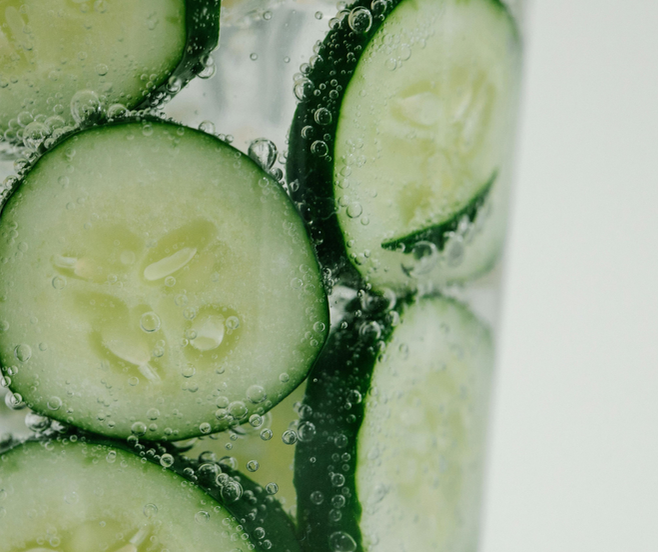When Cucumbers Take Over: Pickling to Save the Harvest
- Vivian Nielsen

- Sep 1
- 3 min read
Here at Garden Gate Lavender, the cucumbers have officially taken over. The brick beds I built this spring are now hidden under vines, and every day I come in with another basket of fruit. At first, it’s exciting - fresh cucumbers for salads, quick snacks, even tucked into sandwiches. But soon, there are more than we can eat fresh. Cucumbers don’t keep long once they’re picked, and once they grow too large, the seeds take over and the flavor suffers.
That’s why I turn to pickling. It’s the simplest way I know to save the harvest and make sure nothing goes to waste.
Why Pickling Works Cucumbers are over 90% water. They soften quickly, and within a few days on the counter they’ve already lost their snap. Pickling changes that. By submerging cucumbers in a salty brine or vinegar solution, you control the environment around them, slowing spoilage, stopping harmful bacteria, and keeping the crisp texture intact. A well-made pickle lasts months in the fridge and even longer if canned properly.
What You Need for Pickling
Fresh pickling cucumbers. Smaller, blockier types hold their crunch better.
Salt. Use pickling salt (not table salt) to keep the brine clear.
Vinegar. White or apple cider vinegar, at least 5% acidity for safety.
Dill and spices. Dill is classic, but garlic, mustard seed, peppercorn, or chili can add character. I grew plenty of dill this season, knowing I’d need it for jars like these.
Clean jars. If you’re canning, they must be sterilized and sealed properly. If you’re doing refrigerator pickles, a clean glass jar is enough.
A Simple Method: Refrigerator Pickles
I start with refrigerator pickles when the first wave of cucumbers hits. They’re fast, flexible, and don’t require special equipment.
Wash and slice cucumbers into spears or coins.
Pack them tightly into clean jars with dill, garlic, or any spices you like.
Heat a brine of 1 cup vinegar, 1 cup water, and 1 tablespoon salt until dissolved.
Pour hot brine over cucumbers, leaving a little space at the top.
Seal, cool, and store in the fridge.
They’ll start tasting like pickles in about 24 hours and get stronger as they sit.
For larger batches, I move into water-bath canning. It takes more care, but it’s worth it when you have vines producing faster than you can eat. The goal isn’t just extending shelf life, it’s capturing the cucumbers at their best so you can open a jar month later and still taste summer.
Here at Garden Gate Lavender, I grow lavender for spices, oils, and soaps - but the farm is full of other life too. Dill that hums with pollinators, cucumbers tumbling out of their beds, lavender rows stretching purple under the sun, fruit trees that lean heavy as they ripen, and animals moving through it all. It’s busy and overflowing, but that’s the beauty of it. Pickling is just one way of keeping pace, a way of showing respect for what the farm gives. It slows the rush down and makes it last.
Next time you’re staring at a basket that feels impossible to finish, think of it as an opportunity. With a little vinegar, salt, and dill, you can turn overflow into something that keeps well beyond the season. That’s a small kind of security, tucked neatly into a jar.

















Comments